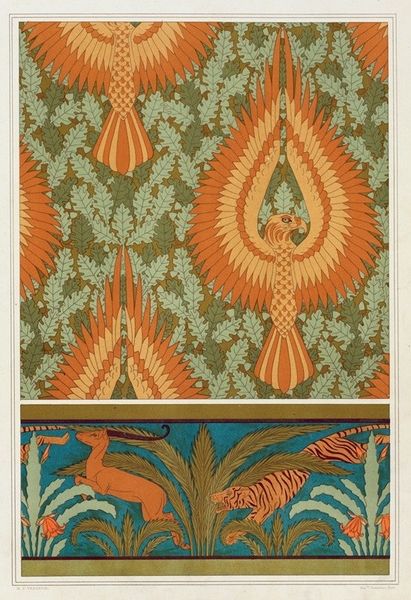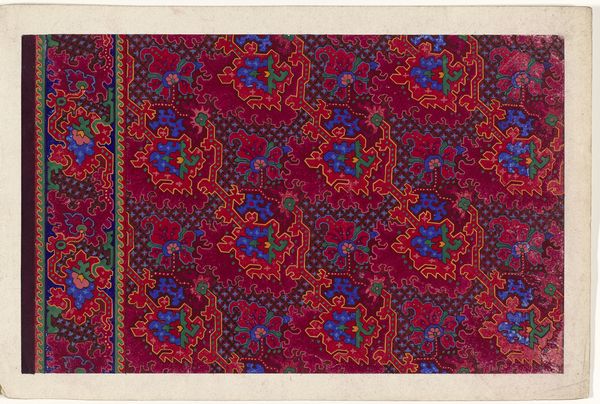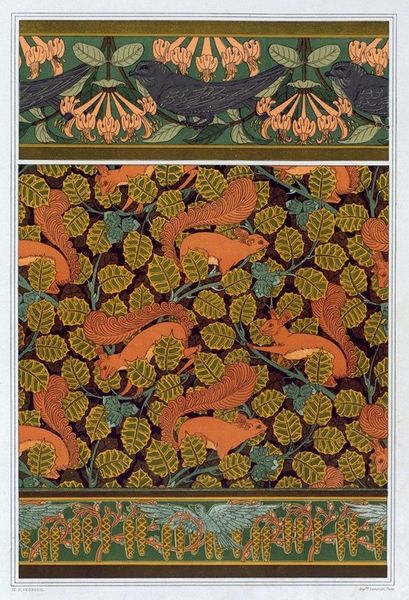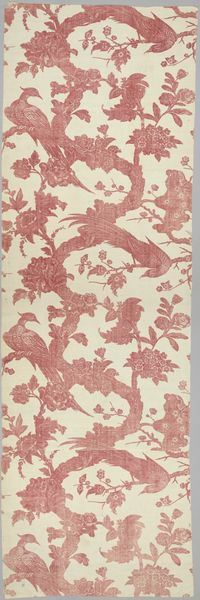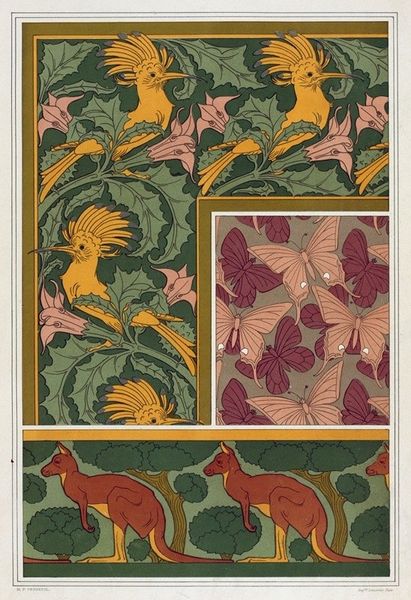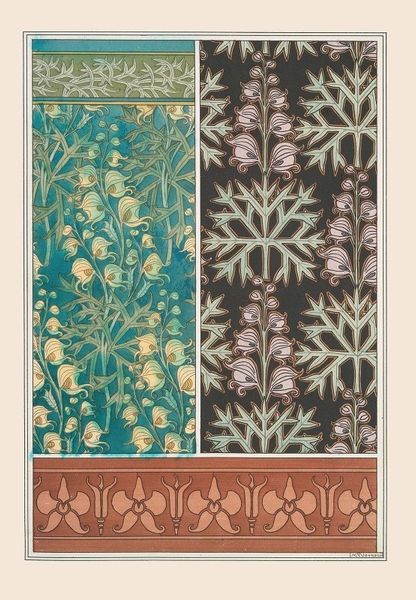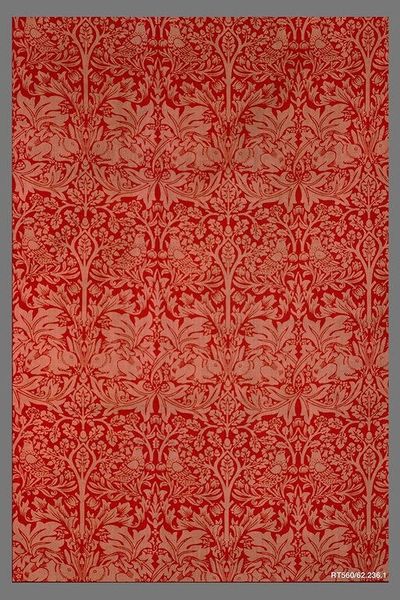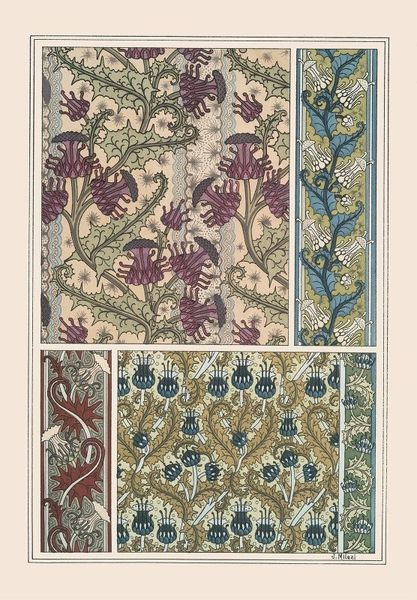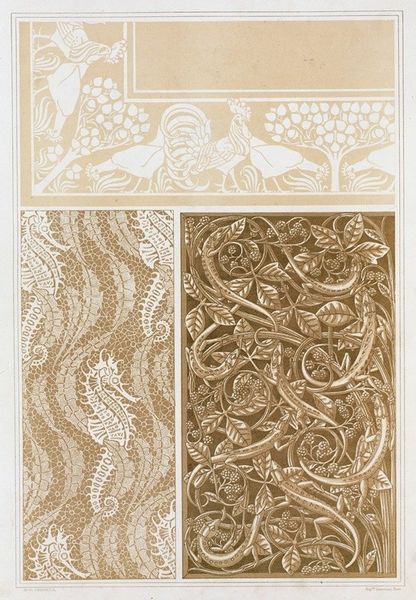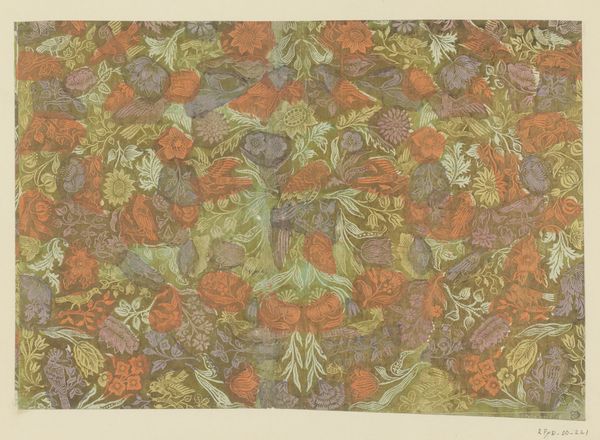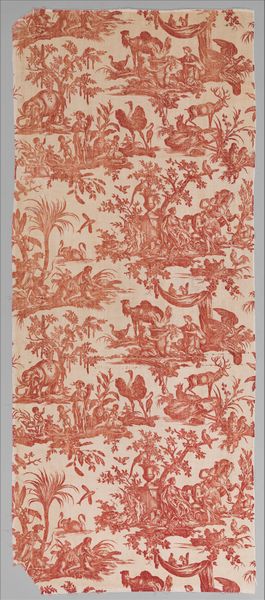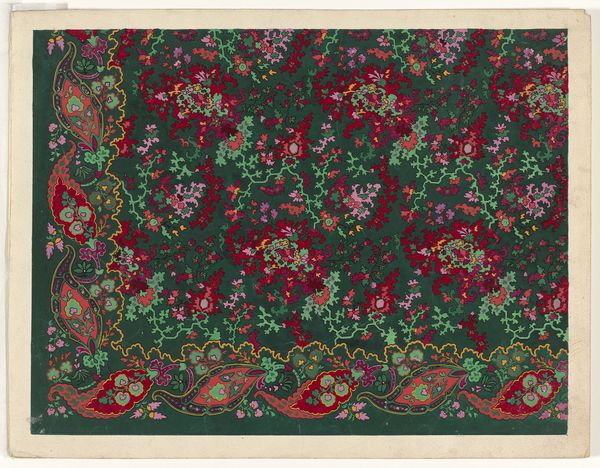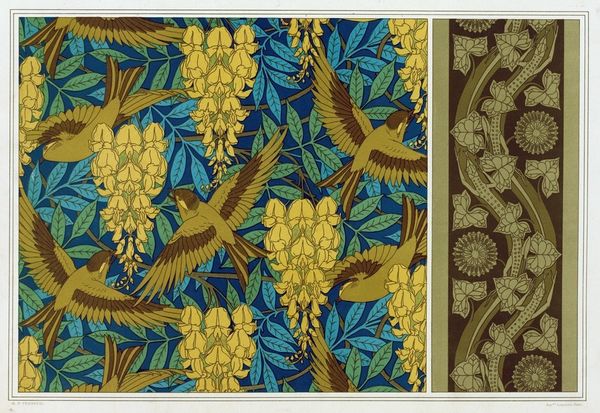
Cacatoès, bordure. Chiens, chevrettes et marcassins, cuir gaufré et doré 1897
0:00
0:00
#
natural stone pattern
#
naturalistic pattern
#
art-nouveau
# print
#
geometric pattern
#
pattern background
#
ethnic pattern
#
organic pattern
#
flower pattern
#
pattern repetition
#
textile design
#
decorative-art
#
layered pattern
Copyright: Public Domain: Artvee
Curator: Here we have Maurice Pillard Verneuil’s textile design, “Cacatoès, bordure. Chiens, chevrettes et marcassins, cuir gaufré et doré," created in 1897. What are your first thoughts? Editor: My immediate impression is rich, almost decadent. The colors are sumptuous, and the repetition of motifs, particularly the animals, gives it a sense of pulsating life. Curator: Indeed. It’s fascinating how Verneuil, working within the Art Nouveau movement, integrates both exotic elements like the cockatoos and more traditional hunting imagery of dogs, does, and young boars. He's clearly responding to market demands for visually striking wallpaper and textile designs, produced using sophisticated printing techniques to simulate embossed, gilded leather. Editor: Absolutely. And it reflects the bourgeois appetite for the "natural" world mediated through decoration. The manufacturing and distribution of such a patterned design raises questions about class and accessibility—was this meant for widespread consumption, or for a select, elite audience? The choice of animals, often linked to nobility and hunting privileges, also informs how art defines its cultural meaning through visual signs and cultural history. Curator: Precisely. Look at the materials themselves. While the print attempts to evoke luxury with its faux-gilded effect, the very nature of printing allowed for relatively affordable reproduction. The question of authenticity versus imitation was certainly relevant. Furthermore, the use of leather embossing, even simulated, places the object within a complex system of production, labor, and material transformation. Editor: And, given its creation at the end of the 19th century, it reflects broader sociopolitical narratives of class, luxury, and perhaps even colonial fantasies linked to exotic creatures like cockatoos. This piece occupies an important space between the decorative and the meaningful in the era's shifting artistic landscape. Curator: Agreed. Studying the material conditions and artistic production reveals so much about the art of its time. Editor: Yes, analyzing the artwork within its social and historical context truly enhances its depth and provides such a nuanced appreciation.
Comments
No comments
Be the first to comment and join the conversation on the ultimate creative platform.
